Tech that can help you stick to your New Year’s resolutions
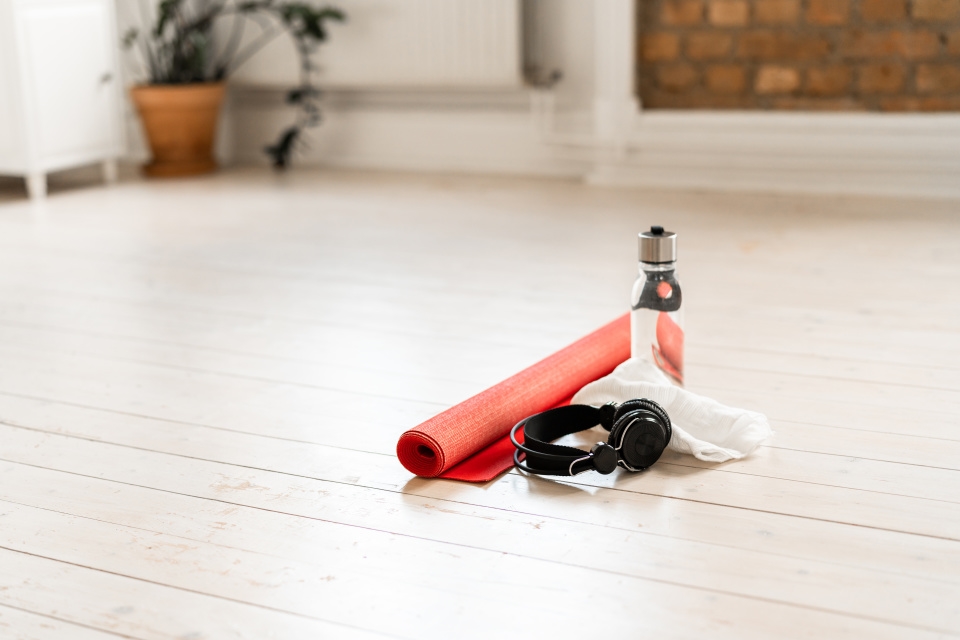
Join me in bidding “adieu” and good riddance to 2020. You may just be hoping that 2021 will bring better things, but there are ways to make that wish a reality rather than a prayer. Setting attainable New Year’s resolutions is one of them, but you may need extra help sticking to them after this challenging year. There’s a ton of tech that can help you meet your goals and stick to them until they become ingrained habits. If you’ve made any of the popular resolutions below, we’ve got recommendations for gadgets and services that can aid you on your path to betterment.
Get healthy
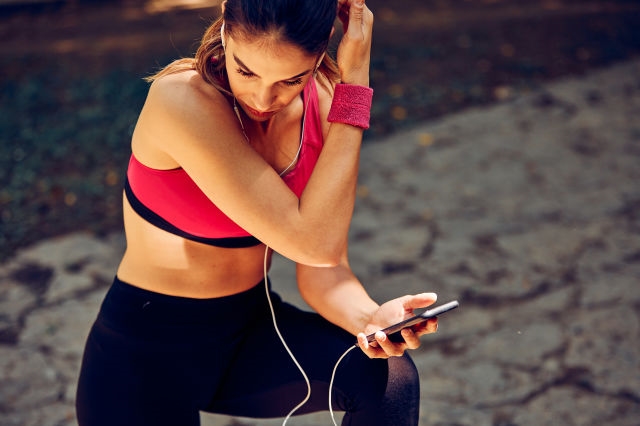
Even if you’re not a New Year’s resolution person, you’ve probably told yourself that you’d try to work out more or cut back on the cake once January came around. Don’t feel bad if, after a few weeks (or days), you found yourself slumping back into your old, sedentary routine — most people do. Trying to be healthier is harder than it seems, but at its core, it’s about building better habits.
One way to build and keep new habits is by holding yourself accountable with a habit tracker. While you can get deep into this subject if you wander down a bullet-journal rabbit hole, a habit-tracking app is probably the easier option. Done and Strides are two iOS options that let you log when you’ve completed a new habit you’re trying to build or when you avoided a bad habit that you’re trying to break. You can get pretty granular, customizing how often you want to do a task, setting reminders to log, reviewing stats and more. However, both apps have paid tiers to which you’ll be asked to subscribe to after you create a couple of trackable habits.
If you’re not trying to tack on yet another subscription to your monthly bills, consider an app like Streaks which is all yours for a one-time cost of $5. As for Android, Grow is a free app that takes a similar approach to habit tracking that Forest takes with time management. You plant a tree with each new habit tracked and you’ll watch it grow every time you log a completion. There’s also Habitica, which turns habit tracking to an 8-bit RPG game in which your custom avatar levels up every time you log a task.
If you want to focus on exercise, there’s a bunch of tech that can be of assistance. Investing in a smartwatch or a fitness tracker is the obvious first step because, not only do those gadgets passively monitor activity and sleep all day, but they also let you track the workouts. Fitbit’s $100 Inspire 2 band is an easy way into the world of wearables — it monitors daily activity and 24/7 heart rate, and with its 10-day battery life, it’ll last long enough to capture information about your sleeping habits while you wear it overnight. The Fitbit app is also quite easy for new users to figure out, and you can track things like water consumption, menstrual cycle and more with it.
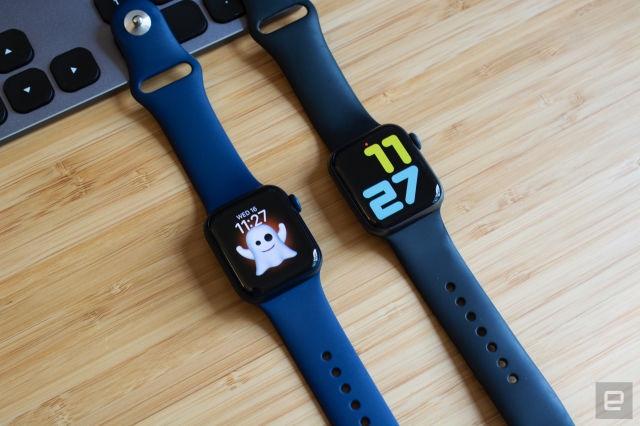
You can go one step further and invest in an Apple Watch if you want a more comprehensive device. It’s the best wearable you can get if you have an iPhone and you don’t even have to pay $350 for the most advanced Series 6 to get features like a built-in GPS, fall detection, emergency SOS and noise monitoring — the $279 Apple Watch SE has those, too. Both Fitbit devices and the Apple Watch work with third-party health apps like MapMyRun, MyFitnessPal and Lose It, but Apple’s device will also sync to Apple Health — something that Fitbit devices still can’t do. If you’re an Android user, we recommend a smartwatch like the Fitbit Sense or the Galaxy Watch Active 2.
It’s easy to say that you’ll work out more, but figuring out exactly what to do can be frustrating. Running and cycling (if you have a bike) are easy options, but if neither of those activities is your style, you can use at-home workout services to inject variety into your routine. Now, I don’t believe you need to be motivated to work out — in fact, I believe if you wait until you’re motivated to do so, you’ll probably never get to it (that goes for any new habit you’re trying to build). But knowing that you have a bunch of new exercise routines to choose from can be a good inspiration to get your butt off the couch and onto a mat. And now, there are so many at-home workout options to choose from thanks in part to this year’s quarantine restrictions. You can simply search on YouTube for a core-strength routine or follow a fitness guru’s short videos on Instagram. But there are more structured options, too, and two solid ones are Daily Burn and Fitness Blender.
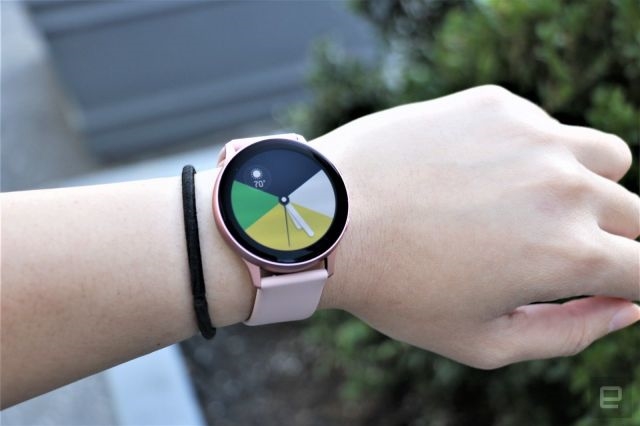
The former is a big player in the at-home workout space. It’s been around since 2007 and has a plethora of on-demand workout videos to choose from. Everything from barre, to strength training, to outdoor running is included under Daily Burn’s umbrella. You can filter out exactly which types of workouts you’re looking for, specifying duration, intensity and more.
But those new to exercising will probably like the Daily Burn 365 workouts the most. Every day, there’s a new workout that you can complete either live at 9AM ET or anytime thereafter. If you don’t want to think too much about which workout to do each day, these videos remove that decision entirely — just log on in the morning and participate. Daily Burn also has one of the more generous free trials (30 days) so you can give it a go before deciding if you want to pay the $20 monthly charge for the subscription.
Fitness Blender is essentially a free yet limited version of a service like Daily Burn. It’s a website where you can find hundreds of free workout videos. Yes, you could just go to YouTube, but there’s a consistent level of quality that comes with Fitness Blenders’ videos. You’re also able to filter workouts by duration, difficulty, body focus, equipment used and more, which is something YouTube can’t replicate.
Get organized
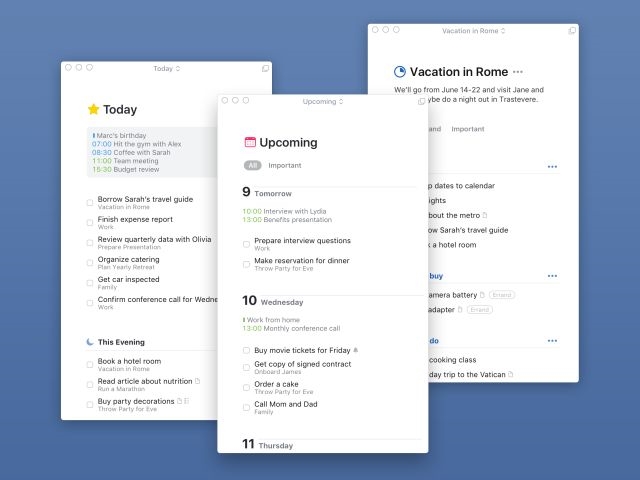
Don’t feel bad if your organization system went out the window in 2020. Juggling all aspects of life is tough even when you’re not dealing with the threat of a pandemic. The new year can provide the opportunity to get back on track and one way to do that is by finding organizational tools that work for you — and making sure those tools are as uncomplicated as possible. The worst thing that could happen is that your to-do list or document storage system ends up being so cumbersome that you avoid using it.
Speaking of to-do lists, you should have one at least for your busiest days. It can be as simple as something you jot down each morning, but there are also apps that let you keep your to-do list with you at all times. I’m a fan of Things 3 for iOS and macOS because it’s detailed enough for big work projects, but simple enough for casual personal tasks. I also love the Today view, which shows me everything across all of my projects that requires immediate attention.
However, you’ll spend $80 to get Things 3 for iOS, iPadOS and macOS — and it’s only available for Apple devices. Microsoft’s To Do is an alternative that, while less involved than Things 3, is free and works on almost every platform including iOS, Android, Windows and more. You can keep it simple and just have a task list and a grocery list, or you can go deeper and add due dates, sub-tasks and even share lists with family members.
While you could skip the to-do list apps if you prefer the handwritten route, it’s imperative that you go the digital round when it comes to password management. A crumpled piece of paper that lives next to your desktop just isn’t going to cut it when our lives are increasingly dictated by usernames and passwords.
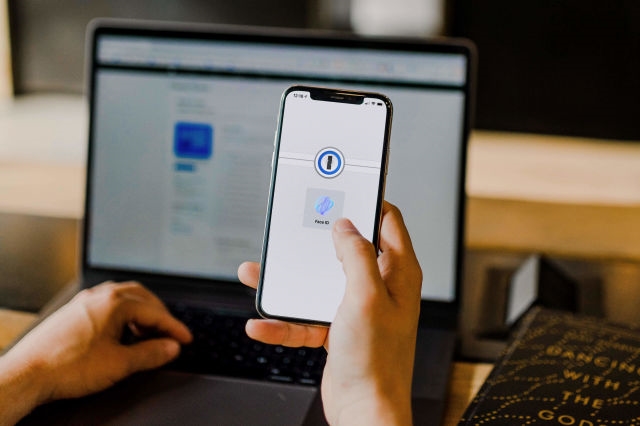
There are a bunch of reasons to get a password manager and a number of good ones to choose from, but I’m partial to 1Password for its cross-platform compatibility and ease of use. I generally rely on the browser extensions to fill in the username and password for sites I visit — that means I usually don’t even need to open the 1Password app. If you’re not sure if a password manager is worth paying for, LastPass has a free and basic version of its service that you can try out.
As for all your physical stuff, now’s a good time to get the piles of papers and stacks of mail in order. It’s even more crucial to do if you’re going to be working from home into the new year — if that’s the case, chances are you’re going to accumulate even more stuff as your personal and professional spaces intertwine. It’s hard to beat a simple file box for important papers and documents. Not only are they cheap, but they take only a few minutes to set up with folders for different parts of your life. Yes, it’s an old-school way of doing it, but you’ll never turn your home upside down while searching for an important document again.
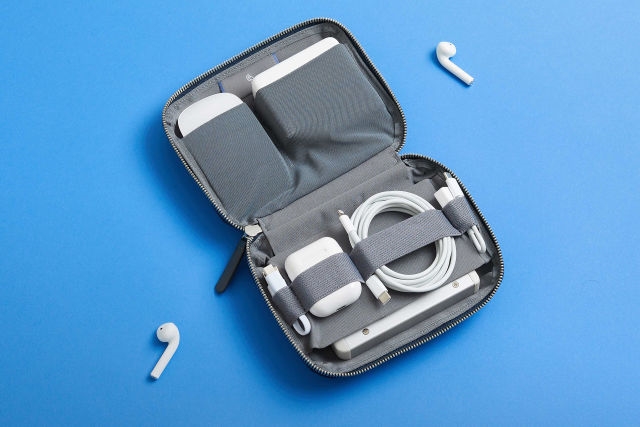
You also might have a lot more gadgets thanks to your work-from-home situation, like a work computer and phone. To avoid losing them or piling them up with all of your personal devices, consider a multi-device charger or charging dock. Vogtek has a solid 6-port USB charging station that, thanks to its circular design, keeps your devices relatively separate while they’re powering up. Satechi’s 7-port charging dock is an even more elegant solution that we’ve recommended in guides before. It’ll hold smartphones, tablets and laptops in its various slots while they’re charging and the latest model includes two USB-C ports in addition to a number of USB-A ports.
If you do find yourself going back to an office or traveling more in 2021, you’ll want to avoid throwing all of your tech into your backpack or handbag. A small electronics organizer can keep your phone, earbuds, charging cables, portable battery pack and the like from being damaged while jostling around in your bag. Bagsmart makes highly practical organizers with water-repellent fabrics and tons of elastic-loop holders while Bellroy’s Tech Kit has a more polished look thanks to its woven, recycled fabric.
Cook more
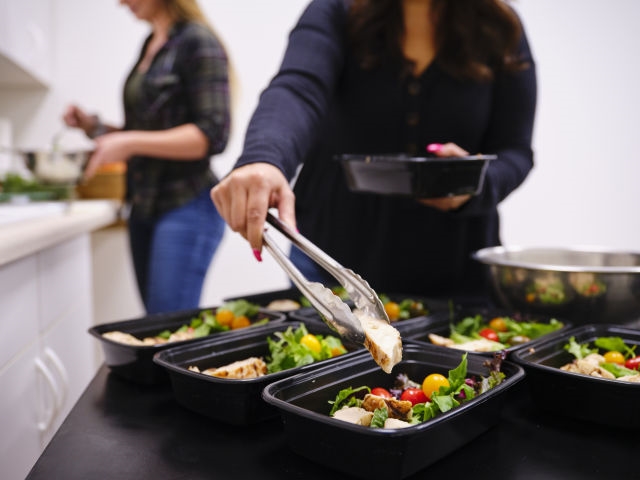
Maybe you started ordering takeout more in 2020 to support local businesses during the pandemic. And maybe now as the year comes to a close, you realize that you’ve definitely relied too much on late-night deliveries. Vowing to cook more at home can be hard if you’re not used to it, and arguably the most difficult part of the whole process is finding the time. It’s easy to get wrapped up during the day and reach 8pm without ingesting much more than a stale cup of coffee — and at that point, the takeout menu becomes your best friend. But you can avoid this vicious cycle by planning ahead and starting with easy recipes.
First, decide what you want to cook. I recommend starting with easy one-pot or one-pan recipes, not only because they save time, but you’ll also have less to clean up afterward. For those types of recipes, you’ll want a good set of sheet pans and a good pot. Try to get aluminum sheet pans in a few sizes (aluminum, more so than stainless steel, will ensure even heating), and some sets even include a cooling rack, too.
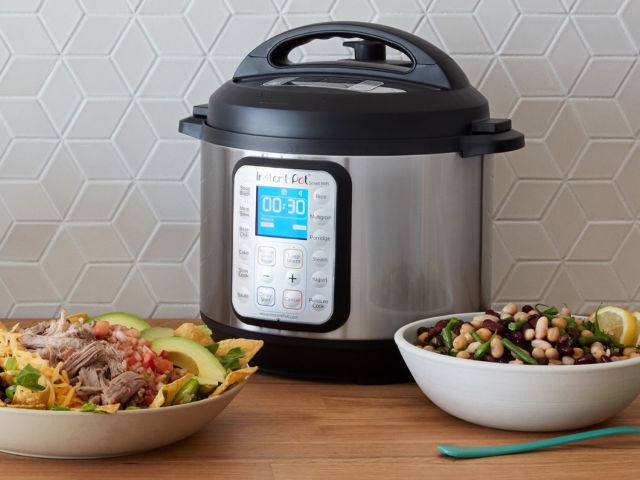
As for the pot, consider a dutch oven if you want to cook on your stove, or a slow or pressure cooker if you want to set it and forget it. Crock Pot makes excellent slow cookers that only require the turn of a knob in the morning to produce tender carnitas by that evening. But if you want more options, the Instant Pot craze is real for a reason. The Duo Nova is arguably the best model for newbies because it gives you seven different ways of cooking all in one, easy to use device. You could even spring for the WiFi-connected Instant Pot if you want the convenience of turning the machine on or off from your smartphone.
The Internet is your friend when it comes to finding recipes to try out. There are hundreds of free resources that can give you ideas for what to cook, and as you accumulate recipes you like, consider keeping them all on cards, a folder on your phone, or an app like Paprika. The latter also lets you plan meals ahead of time and keep track of grocery lists and pantry stock, too. It’ll get much easier to cook regularly once you have an arsenal of favorite recipes you can turn to — especially on those nights you don’t feel like cooking.
Read more

As with most other resolutions, reading more can be accomplished if you find time for it. That means you may have to give up time spent doing other things — like scrolling aimlessly through Instagram. But if you choose more reading and less social media, you’ll likely be better for it.
Your first resource for new reading material should be your library, and with technology today, you don’t even have to go to the building to take out books. The free Libby app lets you load your library card and borrow e-books and audiobooks directly to your smartphone (or Kindle or Kobo e-reader, if you use one of those devices). Libby has gotten more user friendly over the years, allowing you to tag titles so you can keep track of your “to read” list and providing easy ways to see new, popular and readily available books. As a long-time Libby user, I like being able to have separate to-read lists for e-books and audiobooks, and I appreciate being able to connect multiple library cards to my account.
Hopefully your library will have everything you’re interested in — but in case it doesn’t, that’s when you should consider buying physical or e-books outright or turning to services like Kindle Unlimited, Audible and Libro.fm. Especially when it comes to audiobooks, paid services can usually fill in your library catalog’s holes. Audible is the biggest player in the audiobook game right now, but Libro.fm is an alternative that also helps you support local bookstores. Bookshop.org works similarly to Libro.fm, but for physical books and gives you the option of supporting your own local bookstore with your purchase.
Learn something new

Picking up a new skill or dabbling in a new hobby won’t always lead to a total life revamp — and that’s ok. But making the decision to learn something new can inspire you simply by injecting novelty into your routine. YouTube can be a great starting point when you’re learning a new skill but you want to make sure you’re getting accurate information. That’s not to say YouTube doesn’t have good sources (Crash Course and Free Code Camp come to mind) — you just have to do a bit more research and vetting to sort out the reliable sources from the bogus ones. You can also always skip the research and go to a trusted source like MIT or Harvard and choose from their free online courses.
If you’re willing to go the paid route, we’re partial to MasterClass and Skillshare. MasterClass lets you learn from the experts — think screenplay writing from Aaron Sorkin, restaurant-style cooking from Gordon Ramsay and gymnastic fundamentals from Simone Biles. It’s a bit steep at $180 per year, but you’re paying for the names of your instructors and the depth of knowledge they bring to their classes.
Another option is Skillshare and it’s arguably best if you want to get in touch with your creative side. While it does have classes for marketing, entrepreneurship and the like, Skillshare’s focus is creative fields like illustration, writing, photography and design. I appreciate that many of the creatives I follow on social media have their own Skillshare classes, allowing me to learn and potentially get feedback directly from them when completing assignments. Skillshare also has “workshops,” or classes that have a scheduled start and end date, so you can sign up for and complete them along with other students at the same time.
(13)



